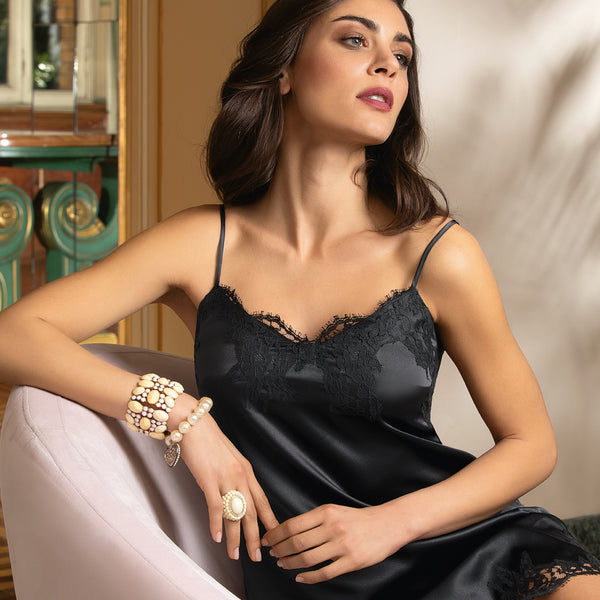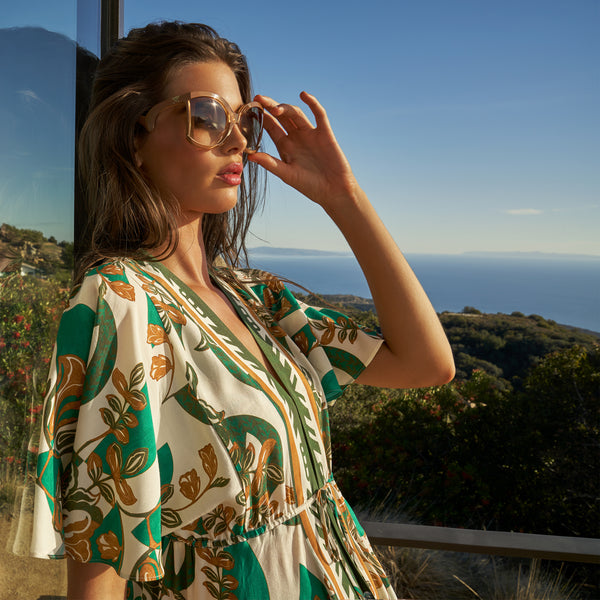04 / 05 / 2023
Understanding Swimwear Cupsizes
How do we work out what size to buy in swimwear? How do we even work out what sizes to take to the changing room? Finding a bikini with size 12 bottoms and a G cup bust, or a swimming costume in size small that fits a larger bust can be tough when swimwear is often offered in ‘size S’, or ‘size 12’. Navigating sizing in swimwear can be a real minefield, most particularly for those of us who wear different sizes on top and bottom to compensate for lack of cupsizing. So, adding your cupsize into the mix may sound like an extra level of complexity, but in fact, it can winnow out all of that decision making by helping you find your perfect size first time.
The mystery of cupsizing in swimwear needs unravelling, as so many of us run for the hills as soon as we’re confronted with reams of sizing information! So, in this blog post, we’ll explore the different ways that swimwear is sized, as well as delve into the pros and cons of cupsizes in swimwear. How do you gauge what size you are in the bust, in conjunction with the rest of the suit, for the best and most flattering fit? Read on for our guide to cupsizing in swimwear.
How does cupsizing in swimwear differ from cupsizing in lingerie?
In terms of how you work out your size, it doesn’t! If you’re a 34B in your bra, that’ll be your swimwear cupsize too. Though just like in lingerie, every brand does it slightly differently, so fit can be quite brand-specific. That’s why getting a swimwear fitting expert to size you up and recommend the best styles to suit you can take away all the angst of wading through choice fatigue with multiple size and style variations.
The difference between cupsizing in lingerie and swimwear is the fabric. Swimwear fabric gives so much more stretch, and this means that fits can be a little more fluid. Different sizes in a swimsuit, for example, can be much more versatile than a cotton and lace bra, because there’s so much stretch in these tightly knit water-repellent fabrics.
Depending on your shape, and the style you choose, for example, a B cup bandeau top without a wire could feasibly look just as good on a D cup customer.
Working out your size in Swimwear
Not sure where to begin? Make sure you’re wearing the right size in your lingerie. Refer to our fitting guide to ensure your current bra size is doing the best job at support and comfort, for you - and then use your lingerie cupsize as your swimwear cupsize.
The dress size + cupsize approach
The way cupsizes are denoted in swimwear does differ across brands. Some brands we stock, such as Roidal and Maryan Mehlhorn, use clothing sizes, i.e. size 8, 10,12,14 and so on, alongside your cupsize, for example, 16 dress size and D cup = 16D.
The bra size + briefs approach
Some brands use bra sizes and then brief sizes to match - for example 32 D, size 12. These brands include Prima Donna and Empreinte.
The dress size approach
Some brands simply use clothing sizes, but with clever styling in intelligent fabrics in order to accommodate and flatter plenty of different cupsizes, for example Miraclesuit.
The no cupsize approach
Swimwear is more forgiving than lingerie, due to its stretchy materials and the fact that your swimwear is unlikely to be supporting you all day every day. That’s why no cupsize is a valid option too, especially in simple cuts like a triangle bikini (these usually come sized XS, S, M, L, XL etc). They allow you to be freer with a style, shape and look that you enjoy, and can even be versatile enough to work beyond poolside. Pain de Sucre, for example, is a great brand whose pieces can be worn as decorative bodies, paired with trousers or skirts, for example. Sometimes this approach is difficult with bigger bust sizes, but generally a good quality brand can support busts up to an E without a cupsize.
Is cupsizing necessary in swimwear?
The answer to this question will be quite personal for you. But there are several pros and cons to cupsizing:
Con: Cupsized swimwear tends to be more expensive
Cupsizing is not an inexpensive option, but the brands that offer it tend to be high-end, resulting in a great fit and high-quality materials. It is expensive to construct cupsize-specific swimwear, because the work is more intricate than creating a chic but simple unstructured one-piece.
Pro: Cupsized swimwear tends to be of a higher quality
Higher cost usually equates to higher quality, and high-quality swimsuits tend to look fabulous, and last for many seasons.
Pro: Cupsized swimwear offers size-specific support
When designed for your cupsize, your swimwear is truly taking your shape into account. This is the primary reason that many will choose a cupsized swimsuit - because it offers the right level of support and comfort. Especially for those with a bigger bust, more generic sizing can leave you mismatched, with a tight top and baggy bottoms, or a swimsuit that is inadequate for your support needs. Cupsized swimwear has taken into account your bust size and support level, so that you can enjoy being poolside all day long without straps cutting into shoulders or wire digging into your underarms.
Whatever type of swimwear you’re investing in, a high-quality piece will stand the test of time. Swimwear can be a luggage saviour, too - pair your swimsuit with a stylish cover-up for lunchtime luxury, or with a smart pair of trousers as a ‘body’ for a fun evening look, and you’ll find your swimwear is suddenly so versatile, taking up so little space in your case yet offering several different looks!
Explore with Juste Moi to discover the best, high-end swimwear from a range of the best swimwear brands available internationally.




